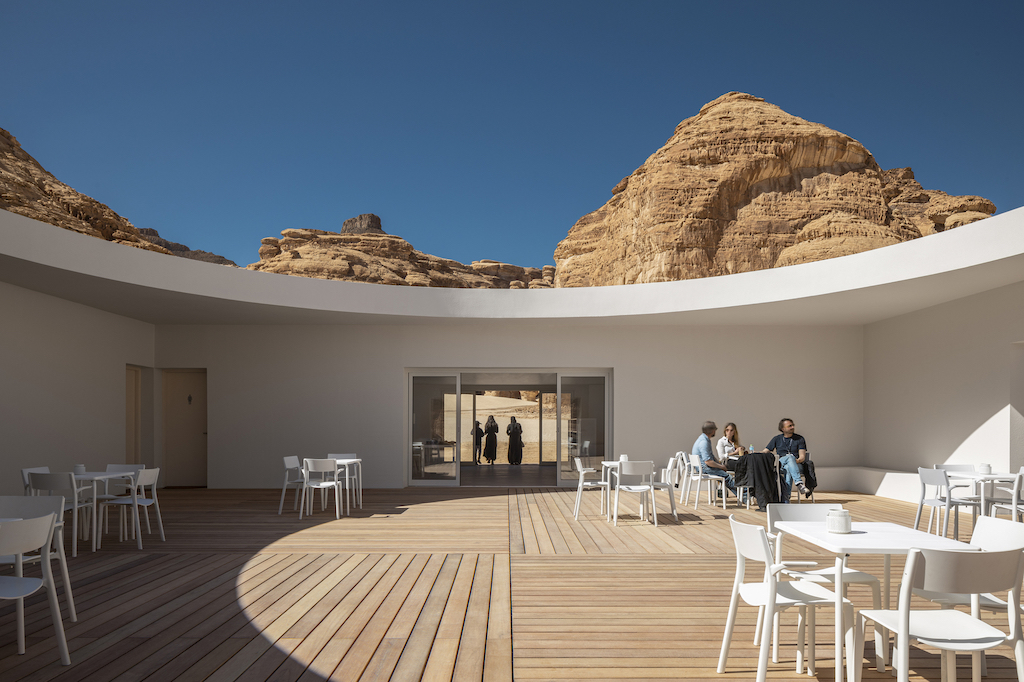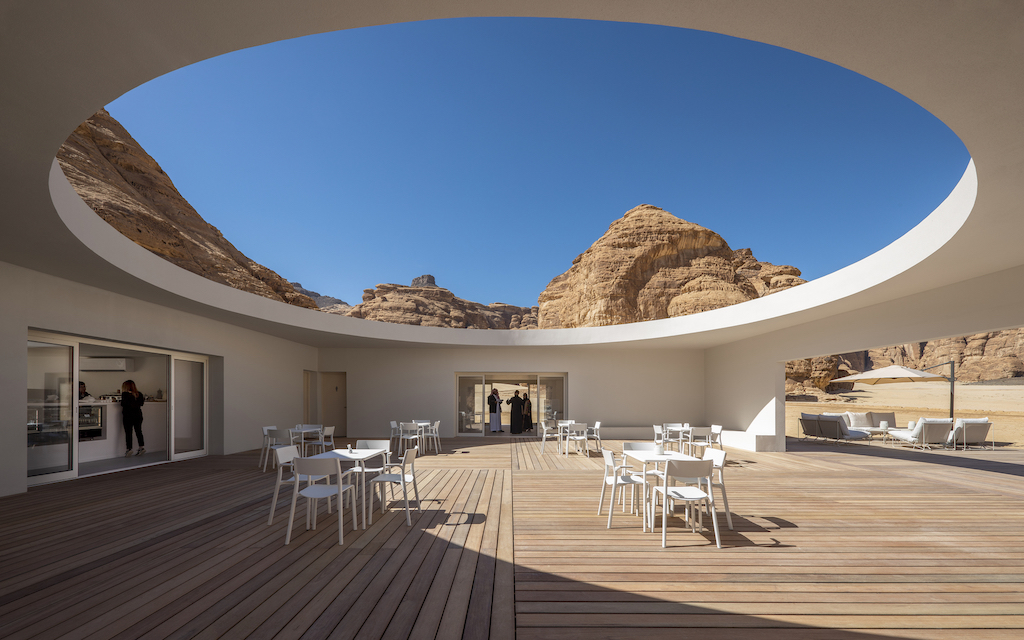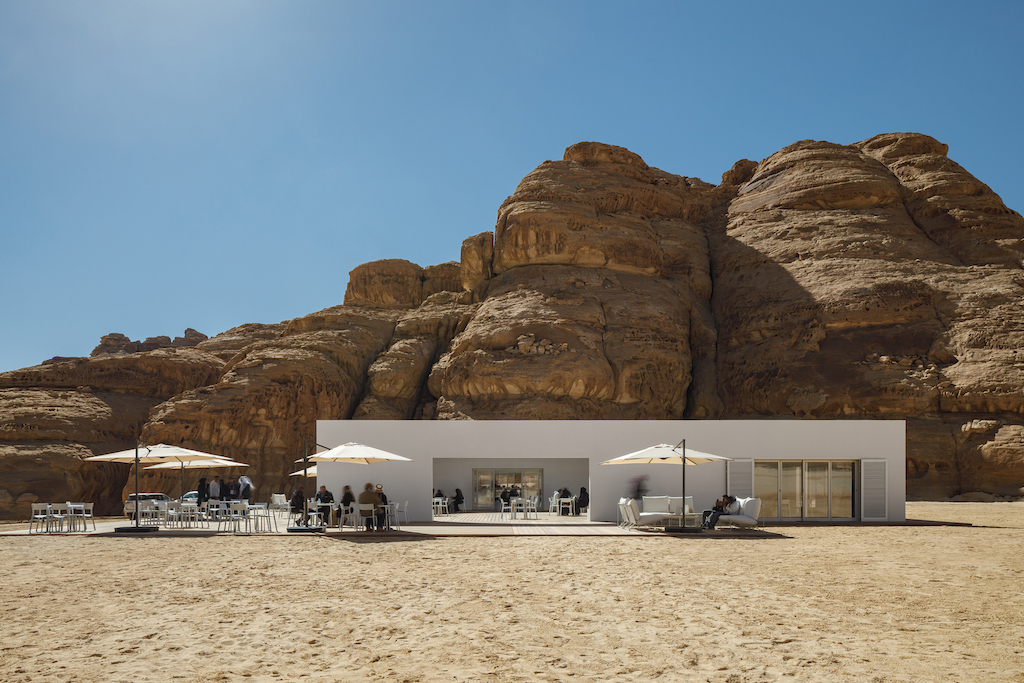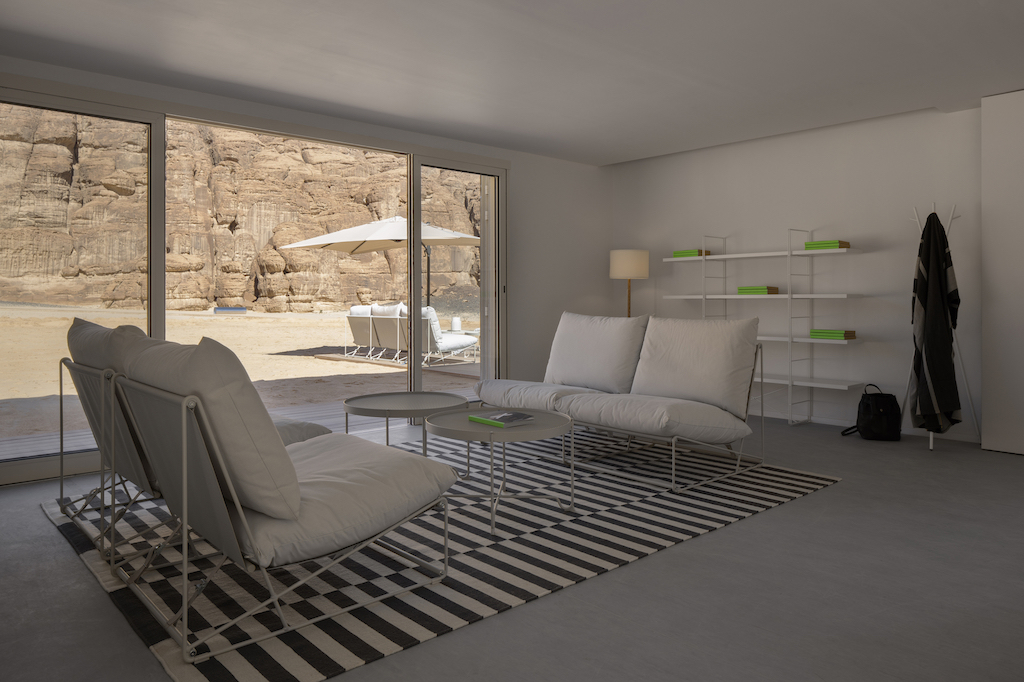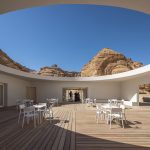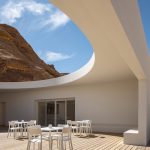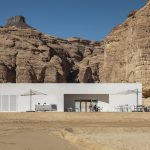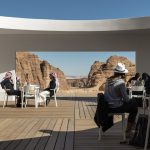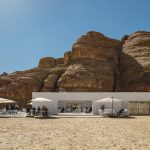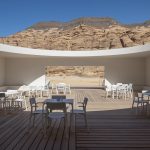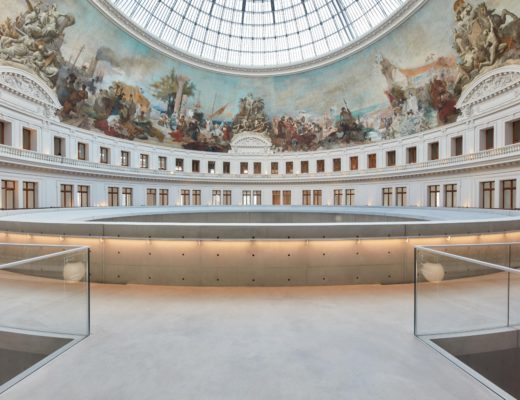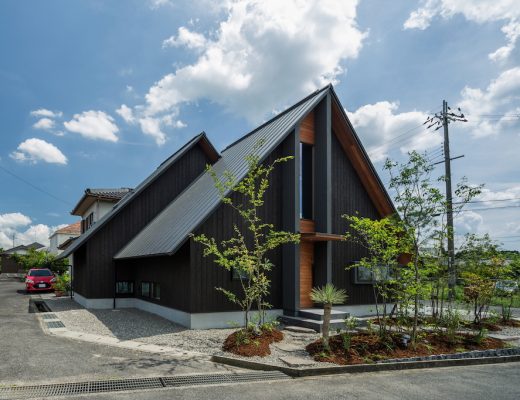As Saudi Arabia opens up its doors to international tourists, plans are afoot to reinvigorate its historic sites. One of them is Al-Ula, an archaeological attraction located in close proximity to Hegra, the oil-rich kingdom’s first UNESCO World Heritage site known for its rock-cut monumental tombs.
The Royal Commission of Al-Ula tasked KWY.studio, a Europe- and US-based multidisciplinary firm founded by architects Ben Allen, Ricardo Gomes and James Bae, to create a 244m² visitor centre to boost the tourism industry. The centre has been envisioned as an oasis in the arid desert and takes its inspiration from the natural elements prevalent in the area such as walled date palm plantations, usually rectangular in shape with large, centrally aligned gates, providing a refuge for visitors in the desert. Materials used predominantly include sandstone while the signature features include columns, arches and cornices, with an emphasis on craftsmanship.
The Visitor Centre is a simple square white boxy structure, carefully isolated at the entrance of the hidden canyon welcoming visitors to the first Desert X Al Ula exhibition. It offers basic amenities such as an information centre and a café as well as a generously shaded courtyard and a viewing deck outside. The few, precisely located windows create various focal points up and down the canyon and increase the contrast between the domestic and the unlimited: an expression of the structure’s scale and its relationship with the surroundings.
The circular roof opening creates a particular atmosphere by framing the rocks and the sky. The two entrances into the courtyard are viewing axis extended by the transparent doors into the information centre and the café: the opposing windows in each of those spaces give a framed view back into the desert. The moment one enters the apparently enclosed courtyard is the very moment when one sees through the building – while its scale and depth is made ambiguous, there is an immediate spatial and functional clarity.
The floorplan is symmetric and nondirectional with each of the two main public spaces accessed from the centre of each side of the courtyard; facilities such as restrooms, staff and storage are located in the corner diagonal to the courtyard. The metric of the building is strict and reoccurring in all dimensions of its spaces and openings: its structural grid is simple, and the uniformly dimensioned spaces allow for the reorganising of the structure for a future change of use.
Desert X Al Ula Visitor Centre is a modest structure, designed and rapidly built with mostly local materials, drawing from two local references: an archetypal walled garden, expressed in the ruled symmetrical geometry and enclosed appearance, and constructive clarity, with spaces appearing to be carved from a solid mass through simple subtractive operations.
See the full gallery here:
Photos: Colin Robertson
You might also like:
Norman Foster’s conflicted views on Saudi projects
Ground preparation work begins on Saudi’s Qiddiya project to be designed by BIG
Saudi-based Bricklab studio wins competition to design indie film venue Hayy:Cinema




